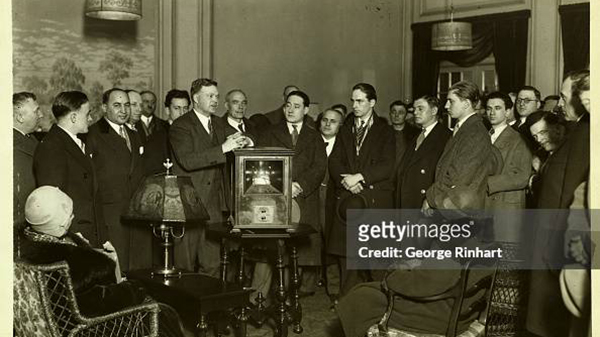
Having been at CTA for more than four decades – including some time as a consultant prior to joining as staff – I’ve been to many milestone celebrations. These include CTA’s 75th and the 50th anniversary of CES, the show we own and produce. Ultimately, these anniversary celebrations are a feel-good moment and an opportunity to recognize, reflect on and celebrate our organization’s history. It’s also a moment for us to look ahead to the next 100 years and share our vision for how technology can and will shape our future. Right now, policymakers on Capitol Hill tend to talk about the technology industry as though it consists of just the big tech companies – like Amazon, Google, Apple and Meta. While they are some of our crown jewel companies, globally competitive and creating huge economic value, that view ignores the thousands of smaller tech companies that are also doing incredible and innovative work. In this environment, it’s important to highlight technology’s power to transform our lives in ways so fundamental we don’t even think about them. That includes the hardware and software we traditionally think of as the ”tech” sectors, as well as newer growth areas like healthcare, transportation, communication, agriculture and more. As a trade association representing more than 1300 technology companies – most of which are startups, and small and medium-sized businesses – the anniversary is also a chance to highlight that innovations can and do come from anyone, anywhere.
As an association, we wear many hats. CTA advocates for pro-innovation policies at the federal and state levels. That includes working with policymakers and their staff to help them understand and hear industry perspectives in areas like artificial intelligence, 5G, cybersecurity, digital health, internet speech, privacy, self-driving technologies and trade. We also have a standards program that works with stakeholders across industry and government to create the blueprints behind many of our favorite tech products and features, from closed captioning to HDTV signals, and to wearable sleep trackers and heart rate monitors. As just one example, our team worked for nearly a decade to achieve the authorization of over-the-counter hearing aids, now available to consumers across the United States.

For decades, CTA’s research team has examined the trends shaping the global technology industry and offered insights and briefings to industry leaders. And, of course, CTA is best known for producing CES, the world’s most powerful tech trade show. Even after decades of attending the show, I believe there’s nowhere on earth more exciting than the CES exhibit halls for four days each January. CES offers opportunities for global companies to make big announcements, startups to show their innovations and get their big break, deals and partnership to be made, and – perhaps most important – the opportunity for many thousands of attendees to experience the serendipity and wonder of discovering and experiencing new technologies for the first time.
I used to read a lot of science fiction, and it’s incredible the ideas that were written about several decades ago that have now become a reality – like advanced robotics, flying cars and virtual worlds! But our world faces big and growing challenges, and I think technology has the potential to address and even solve many of them. In transportation, we're heading toward more sustainable, lower-emission vehicles, as well as self-driving cars that offer opportunities for people with mobility challenges. In education, you’ll see a future where everything is customized for individuals and their pace of learning. As the spouse of a doctor, I can already see the start of huge changes in healthcare, with electronic records and more personalized treatment based on biometrics, to family history, to where they live and what they eat. That will also produce enormous cost savings for our healthcare system as people live longer, healthier lives. ChatGPT and other forms of generative AI will help automate repetitive tasks, and dive deep into data to produce new insights that support scientific discoveries. That's a double-edged sword, with ramifications for employment by a lot of people, but I think increasingly you’ll see AI and other technologies working with people to do tasks better and faster, rather than simply replacing them.
Or take drones, which are helping to reduce the risk to people – taking on difficult or dangerous jobs like bridge inspection, explosives removal or military operations. In agriculture, technology is transforming what’s possible. We saw an amazing demonstration by John Deere at CES 2023 showing how the equipment integrates AI and machine learning to minimize environmental impact. Energy production will continue to be a factor, but I expect that whether it's hydrogen, nuclear, solar or other emerging technologies, we'll be solving a lot of energy problems that we see with fossil fuels. Augmented and virtual reality will create more and more lifelike and immersive experiences, which aren’t just good for entertainment; they're good for training and education. The amount of innovation even in the last several decades is incredible, and I think we’re only scratching the surface of what’s possible.